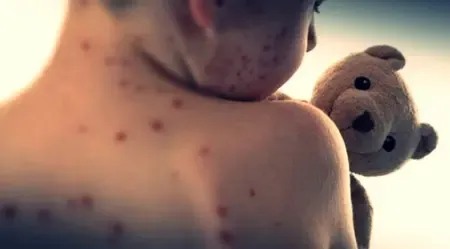Are Measles Cases in the US at a Record High Since 1992?

Synopsis
Key Takeaways
- 1,618 measles cases reported in the US this year.
- Highest number since 1992.
- Three fatalities linked to the outbreak.
- 92% of cases involved unvaccinated individuals.
- Vaccination is essential to prevent further outbreaks.
Los Angeles, Oct 23 (NationPress) The United States has reported 1,618 cases of measles along with three fatalities this year, marking the highest count since 1992, as per newly released government statistics.
Of these, 1,595 cases were identified across 42 local jurisdictions, while 23 cases involved international visitors to the country, as stated by the US Centers for Disease Control and Prevention (CDC). This total signifies the most infections recorded in the US since 1992, when the CDC documented 2,126 cases.
Among the confirmed cases in 2023, 198 patients, accounting for 12 percent of the total, necessitated hospitalization, including 95 children under five years old. Reportedly, three individuals have succumbed to measles, according to Xinhua news agency.
The CDC indicates that 92 percent of the measles cases in the US were among individuals who were either unvaccinated or whose vaccination status was unclear.
Health experts emphasize that these figures illustrate a significant resurgence of measles in the nation and highlight the critical need for improved vaccination rates.
Measles is known as a highly infectious viral illness spread through respiratory droplets and physical contact.
Typical complications may include symptoms like fever, dry cough, runny nose, sore throat, and inflamed eyes. However, the disease can be effectively prevented through vaccination.
Once measles infects the respiratory system, it disseminates throughout the body, leading to symptoms such as a high fever, cough, runny nose, and a widespread rash.
Vaccination is the most effective method to prevent contracting measles or transmitting it to others. The vaccine is safe and empowers the immune system to combat the virus.
Before the measles vaccine was introduced in 1963, major outbreaks occurred roughly every two to three years, resulting in an estimated 2.6 million deaths annually.
In 2023 alone, it is estimated that 107,500 individuals died from measles—predominantly children under five—despite the existence of a safe and affordable vaccine.
The onset of measles symptoms typically occurs 10 to 14 days post-exposure to the virus, with a noticeable rash being the most prominent indicator.
The rash typically appears 7 to 18 days after exposure, starting on the face and upper neck, and spreads over three days to the hands and feet, lasting about 5 to 6 days before gradually fading.









